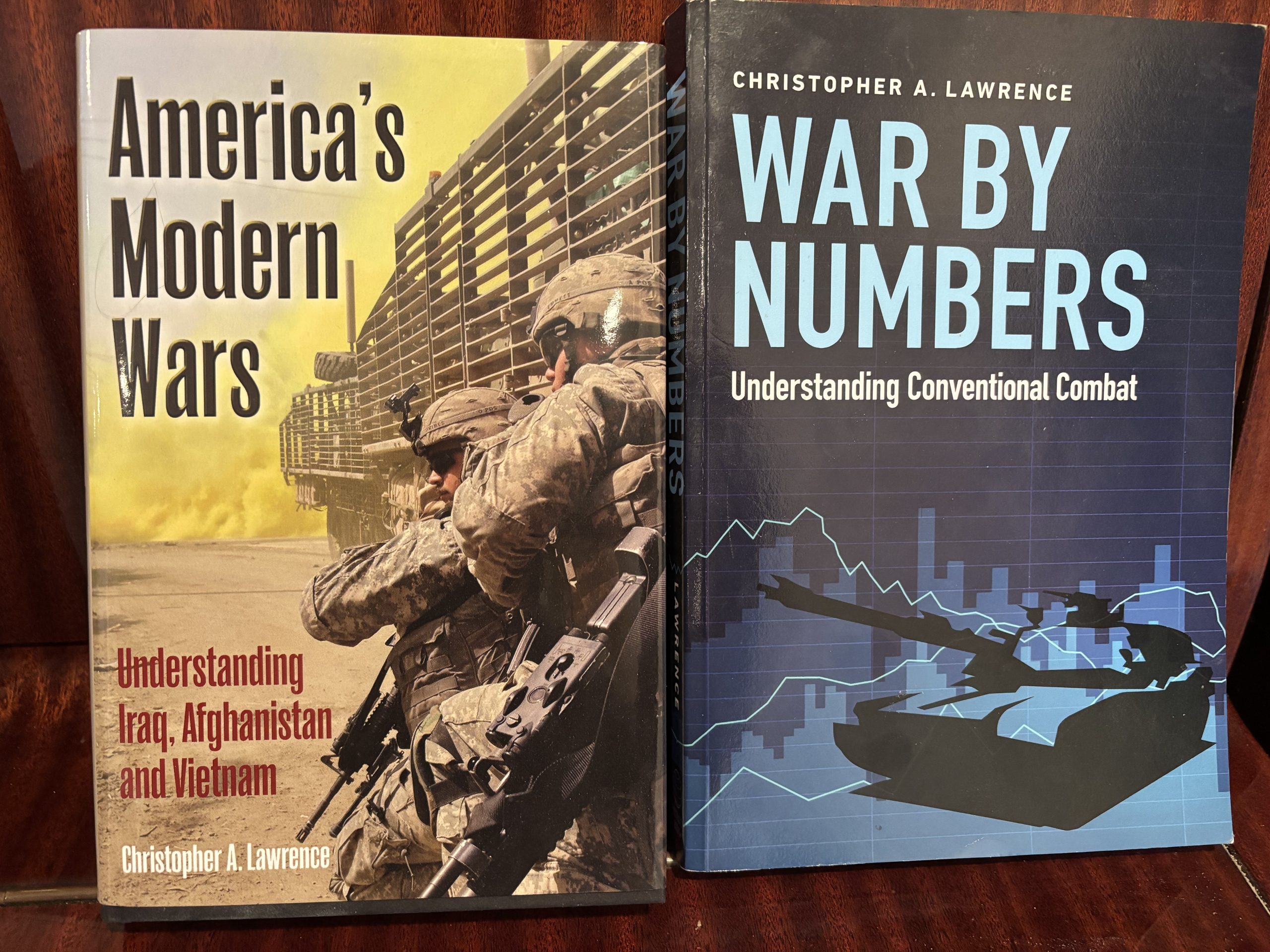I have decided to turn one of my email discussions I was having with several people into a blog post. As they got into a discussion of friendly fire (I gather based upon one addressee’s personal experience), I ended up making the following statement:
Friendly fire (FF):
1. The original figure that came out of WWII was 2% of the casualties were due to friendly fire (Beebe and Debakey?).
2. This was probably low.
3. Since WWII there has been no definitive studies on FF casualties that I am aware of.
4. It was much higher than 2% in the 1991 Gulf War.
5. In the 1990s Chuck Hawkins (Vietnam company commander) and Gene Visco (DUSA OR) did some preliminary work looking at FF casualties. They were attempting to get a contract to do an actual proper survey of the subject. That did not happen.
6. By default, the preliminary work by Hawkins and Visco (both deceased) is the only significant work on FF casualties that has been done since WWII. I may have a copy somewhere in my files. Not sure anything has been published or is on the internet. I think they presented their findings at ISMOR.
Dermot, you are welcome to discuss what the UK has done.
Dermot Rooney, the author of Slog or Swan (see: Slog or Swan – The Dupuy Institute) came back with the following response:
Here’s the Slog or Swan quote:
Meanwhile, fragile radio communications separated infantry and artillery, contributing to a high rate of fratricide. A Canadian study conducted during Veritable put the number of Allied casualties to friendly artillery at between seven and 21 percent of the total. The actions examined for the current assessment support splitting the difference at around 15 percent.11 This figure is alarmingly close to the 19 percent attributed to German small arms, and considerably greater than the six percent benchmark for friendly fire casualties in a First World War barrage. Artillery fratricide was also a major factor in five of the failed attacks in the current assessment and, considering the tendency to underreport such events, was likely a factor in as many more. The high chance of fratricide very probably undermined the essential trust between infantryman and gunner, the coordination of fire and assault, and therefore the value of suppression.12
[11] This is another of those tantalising glimpses mentioned earlier. The figures are the extremes presented in Brigadier E. C. Plow’s study of munition fragments removed from casualties and could only be found in Appendix L of Copp’s Cinderella Army. Copp and Buckley opt for ‘as high as 19 percent’. Copp, Cinderella Army, pp.291, 338–340; Buckley, Monty’s Men, p.272.
[12] Contrary to the mines and mud narrative, the Canadian wounds study also found 4 percent of casualties were caused by the combination of mines and grenades, way behind German artillery, German small arms, and Allied artillery. J. B. Coates and J. C. Beyer (eds), Wound Ballistics in World War II: Supplemented by experiences in the Korean War (Washington: Office of the Surgeon General, 1962) has mines accounting for 0 to 10 percent of total casualties depending on the sampling method. The battle descriptions for this assessment suggest the effect of mines on advance rates was marginal and appears no greater than in other operations.
If anyone has a copy of any presentations made or write-ups done by Charles Hawkins or Gene Visco on fratricide, please forward them to me (LawrenceTDI@aol.com).
I do note that the links to Cornwallis Group, founded in 1996 by Gene Visco, is no longer connected to the ISMOR site. It does seem like we are losing knowledge. The earliest ISMOR link I can find is ISMOR 39 (with the Eugene Visco prize): ISMOR – ISMOR 39 | ORS. There were links to earlier ISMOR conferences and papers, and links in ISMOR to the Cornwallis Group, but I cannot find these.







